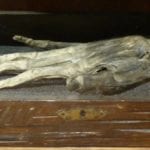 Weird Stuff
Weird Stuff  Weird Stuff
Weird Stuff  Mysteries
Mysteries 10 Tragic Disappearances and Deaths in Joshua Tree National Park
 History
History 10 Ways Childhood Really Sucked in the Old West
 Music
Music 10 Name Origins of Famous Bands from the 1990s
 Religion
Religion 10 Biggest Turnarounds by the Catholic Church
 Weird Stuff
Weird Stuff 10 Unbelievable Times Laws Had Unintended Consequences
 Humans
Humans Ten Historic Women Who Deserve Way More Credit Than They Got
 Movies and TV
Movies and TV 10 Films That Spawned Major Lawsuits
 History
History Ten Times Towns Were Wiped Off the Face of the Earth
 Creepy
Creepy 10 of the Most Disturbingly Haunted Public Houses in the UK
 Weird Stuff
Weird Stuff 10 Niche Subcultures That Are More Popular Than You Might Think
 Mysteries
Mysteries 10 Tragic Disappearances and Deaths in Joshua Tree National Park
 History
History 10 Ways Childhood Really Sucked in the Old West
Who's Behind Listverse?

Jamie Frater
Head Editor
Jamie founded Listverse due to an insatiable desire to share fascinating, obscure, and bizarre facts. He has been a guest speaker on numerous national radio and television stations and is a five time published author.
More About Us Music
Music 10 Name Origins of Famous Bands from the 1990s
 Religion
Religion 10 Biggest Turnarounds by the Catholic Church
 Weird Stuff
Weird Stuff 10 Unbelievable Times Laws Had Unintended Consequences
 Humans
Humans Ten Historic Women Who Deserve Way More Credit Than They Got
 Movies and TV
Movies and TV 10 Films That Spawned Major Lawsuits
 History
History Ten Times Towns Were Wiped Off the Face of the Earth
 Creepy
Creepy 10 of the Most Disturbingly Haunted Public Houses in the UK
10 Supernatural Relics And Their Turbulent Histories
The world would be a very, very boring place without a little bit of the unknown, the mystical, and the supernatural. Throughout history, there have been a series of relics reputed to have mystical, magical origins or powers well beyond what we can possibly understand—and acting on human nature, some will go to great lengths to possess them.
10 The Buddha’s Tooth

According to the legend, when the Buddha was cremated, there was only one thing that was left behind—a left canine. The tooth became a symbol of the Buddha and has had a long and rather storied history of people fighting over the tooth and the right to keep and display part of their sacred leader.
The official tooth is kept in the aptly named Temple of the Tooth in Sri Lanka, but there are also some pretty wild stories about the tooth’s journey over the centuries. Many wanted the tooth for themselves, and it was finally carried to Sri Lanka secured in the hair of a princess of Dantapura in the fourth century A.D. During the period of European colonialism and Portuguese expansion, explorers who seized control of Sri Lanka also seized the tooth, handing it over to their Archbishop who burned it and threw the ashes into the ocean. Fortunately, the tooth was one of a number of decoys put on display during a turbulent time, and the real tooth was kept safe.
Today, you can still see the tooth of the Buddha in Sri Lanka, but if you’re closer to California, you can see one there, too. The Lu Mountain Temple in Rosemead, California acquired a massive collection of 10,000 Buddhist artifacts, including a tooth. The relics, collected by a Buddhist man living in Vietnam, were passed along with the belief that they needed to be shared with the community. The tooth is is said to be 2,500 years old, and it’s still growing—it’s currently about 5 centimeters (2 in) long. Some visitors to the monastery have reported being healed after the arrival of the relics, but the temple itself says that nothing has been authenticated. For them, it’s the belief in the relics and what they stand for that make the tooth truly valuable.
9 The Fairy Flag Of Dunvegan
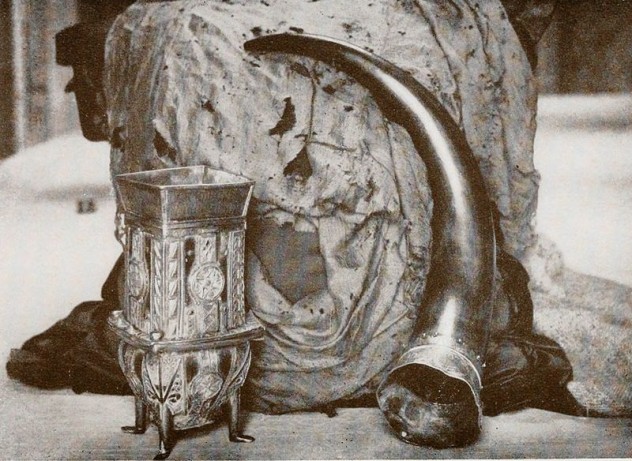
The MacLeod clan in Scotland has a relic that’s been passed down from generation to generation. According to one legend, the flag was carried into battle by King Harald Hardrada of Norway, when he moved to conquer Britain in 1066. When the king was killed, the square of silk passed to his descendants’ clan.
According to another story—often retold as family lore—the fourth chief of the clan fell in love with a fairy princess who was forbidden to marry a mortal man. Her father eventually relented and let her spend a year and a day with her love. During that time, she gave birth to a boy. When it came time to leave, she made her beloved promise that he would never let the baby cry because she would be able to hear it even in the fairy realm. Babies will be babies, though, and eventually he did begin to cry. She came back from the fairy realm briefly to visit her son. While she was with him, she gave him a blanket to comfort him. That blanket is said to be the legendary flag.
The tradition also holds that the flag contains magic that will protect the members of the clan in times of need, but that it’ll only work three times. In 1490, the flag was carried during a battle between the McDonalds and the MacLeods, who were, of course, victorious. In 1520, the flag was once again used in a battle against the McDonalds, leaving enough magic for one more victory. During World War II, soldiers belonging to the family were said to have carried a picture of the flag with them as they went to war, and the chief of the clan during wartime volunteered to take the flag to Dover should the Axis troops attempt to invade Britain.
8 The Cloak Of The Prophet Muhammad
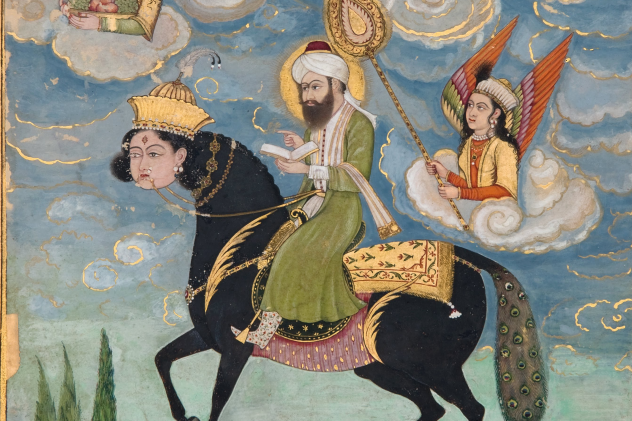
The Cloak of the Prophet is a sacred relic worn by the Prophet Muhammad. According to legend, the cloak made its way to Afghanistan in the possession of the first king of the modern Afghan state, Ahmad Shah Durrani. When visiting what’s now Uzbekistan, he saw the cloak and knew that it needed to return home with him. He made a promise to the keepers of the cloak, pointing to a rock and swearing that he wouldn’t take the cloak very far away from that particular stone. Today, that stone, the king’s remains, and the cloak rest in a heavily guarded shrine in Kandahar.
The cloak is kept under lock and key with a single family of honored custodians. It’s an honor that they take very, very seriously; many assassins have tried and failed to reclaim the cloak.
In 1996, the cloak became a part of the imagery of the Taliban when Mullah Omar, the man nominated to become the figurehead of the next holy war, requested an audience with the cloak. When he removed it from the shrine and appeared in public with it—a holy symbol that’s usually absolutely off-limits to the general public—it gained him the support of the people and the legitimacy he needed to make the Taliban a force to be reckoned with.
7 The Relics Of Saint John The Baptist
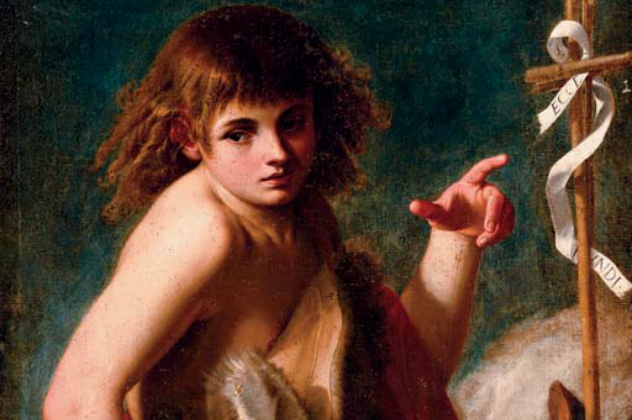
As one of the major figures of early biblical history, there are a lot of stories and almost as many relics floating around from Saint John the Baptist. There are also a handful who claim to have his skull—they can’t all be telling the truth. One recent find in the Black Sea hasn’t been confirmed as belonging to the saint by any means, but it turns out that it does have quite the pedigree.
In 2010, a small urn was found when excavations were done on the island of Sveti Ivan—Saint John—in Bulgaria. The urn contained pieces of a skull, jaw, arm, and tooth. Nearby was a small box engraved with the birthday of the saint, June 24. Of course, the find wasn’t without its naysayers, many of whom correctly pointed out that there are a huge number of claims to have a piece of the saint.
These relics, however, have a bit of credibility that many of the others don’t. When archaeologists from Oxford University subjected the remains to carbon dating tests, they were surprised to find out that the bones dated to the first century A.D., the time of St. John’s famous beheading at the request of King Herod. The remains were further determined to have come from the same person, most likely a male from the Middle East. While the tests certainly don’t prove that the bones belong to the saint, they do tick off a lot of the boxes that leave it open for speculation. Historical documents associated with the ancient monastery seem to indicate that the bones have been on the island since sometime in the fifth or sixth century.
6 The Relics Of The True Cross
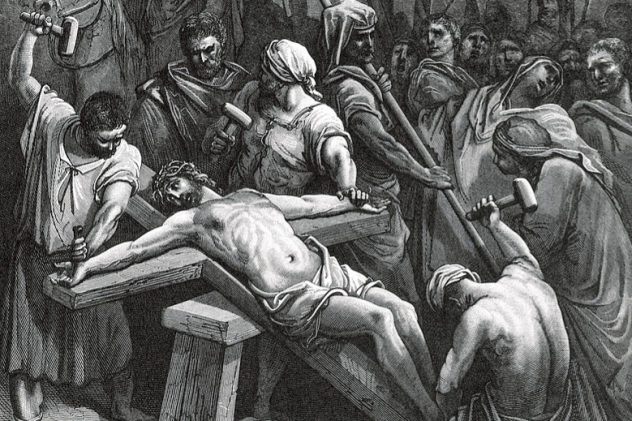
Much like the relics of St. John the Baptist, many pieces of the one true cross have made their way into churches around the world. One of the most important of all of these churches and cathedrals is the Church of the Holy Cross in Jerusalem. In addition to three pieces of wood that purportedly came from the cross, the church is also home to other relics such as two thorns from Christ’s crown and one of the nails used in the crucifixion. The relics were assembled by St. Helena, most well known for her legalization of Christianity.
While it might seem like all the turbulence in the history of the cross might begin and end with Christ’s crucifixion, there’s more to it than that. Sometime around A.D. 1250, an archbishop of Genoa named Jacopo de Voragine set about collecting all the stories that revolved around the saints and their relics. The Golden Legend is a series of stories in 177 chapters that chronicles everything you could possibly want to know about the history of saints and biblical figures. In Volume 1, he tells the story of Adam and one of his sons, Seth. After Seth was born, Adam continued to live for another 800 years; Adam sent Seth back into Paradise for fruit from the Tree of Mercy. When Seth returned with the seeds, Adam laughed at him and died. Seth placed the seeds in his father’s mouth, and the seeds grew into three trees—the same trees that were used to create the cross.
The story of the cross is no less fantastic. The legend says that after Christ was removed from the Cross, it was discarded in a ditch and buried to prevent believers from finding it. The Emperor Constantine, a Christian, prayed to God for help in battle. He received it in 312 and made the cross the symbol of his Roman troops after seeing the image of it in the sky. In 326, his mother was guided to the place where the cross had been buried by an elderly Jew who had received the knowledge of the cross’s resting place as it had been passed down through his family. Not surprisingly, the relic was said to be at the center of several battles, including the sacking of Jerusalem in 614 by the King of Persia.
5 The Stone Of Destiny
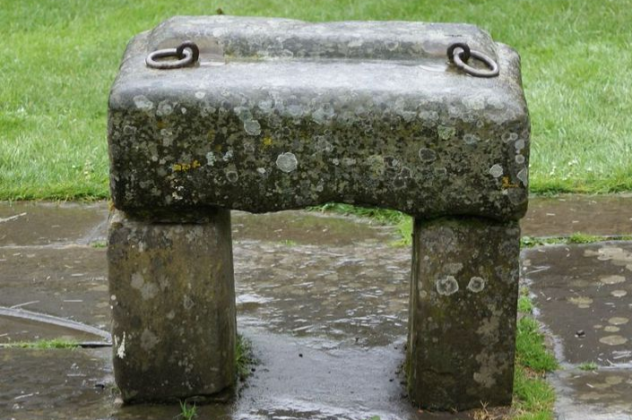
The Stone of Destiny, also called the Stone of Scone, has long been the coronation seat for the kings of Scotland. Not surprisingly, it’s had something of a history between Scotland and England.
The history of just where the stone came from has long been lost. According to one legend, it’s the stone that Jacob used as a pillow when he dreamed of a spiritual ladder to Heaven and the same stone that later became the seat of the Ark of the Covenant. It was likely brought to Britain first via Ireland, where it was used to confirm the vows of their kings. In 840, the stone was moved from its location at Scone to Perthshire, where it became the place the Picts and Scots were united under one ruler.
In 1292, John Balliol was coronated on the stone. He was the last king of Scotland to receive that honor. In 1296, Edward I seized the stone and took it to Westminster Abbey, where it’s remained for centuries. It’s been in use all this time, too. Most recently, it was a part of the coronation of Elizabeth II.
Not surprisingly, it’s long been something of a sore point between the two countries. In 1996, the stone was returned to Scotland, but some weren’t convinced it was real thing. Scotland’s first minister at the time was of the opinion that it was the fake of a fake—not only did Scotland give Edward I a fake Stone of Destiny, but a fake of that fake had been returned to Scotland. In 1950, the stone was stolen from Westminster, taken on a joyride into Scotland, then ultimately returned. The idea’s been circulating that while it was gone, copies were made.
4 Curtana, The Sword Of Mercy
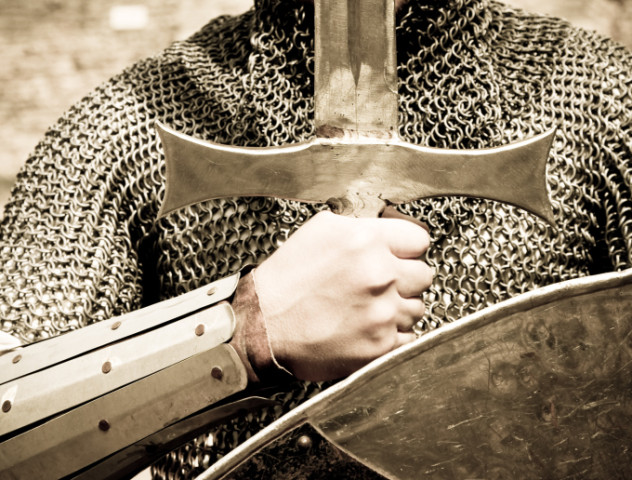
The crowning of British monarchs is a complicated affair; while many have made their own additions to the Crown Jewels over the years, there’s one piece of royal regalia that has a particularly ancient history.
There are several swords used in the crowning of the new monarchs: the Sword of the State (the only one used rather than just carried), the Sword of Justice to the Spirituality, the Sword of Justice to the Temporality, and Curtana, the Sword of Mercy. Curtana, the only sword with a name, was given that name around the coronation of Henry III in the early 13th century. The flat blade has been shortened and the end removed, giving it the designation of the Sword of Mercy.
According to legend, the sword first appeared as part of the royal regalia of King John in 1199. He received the sword when he became the count of Mortain, which includes massive areas in the southwestern part of England—most notably Cornwall. It’s an important connection that gives a bit of credence to the idea of the original owner of the sword, the legendary knight Tristan. Although Tristan is more familiarly associated with the story of his romance with Isolde, his legends aren’t without their battles. According to the stories, Curtana was broken when he struck the blow that killed Morholt, leaving the end of the sword in the other man’s skull. The sword then passed to Ogier the Dane, who shortened the blade and gave it an early version of its current name. Records show that the sword was taken to the Tower of London, but by the time Henry VII took the throne, there were records of two swords with blunted blades that were both named Curtana.
3 The Nanteos Cup
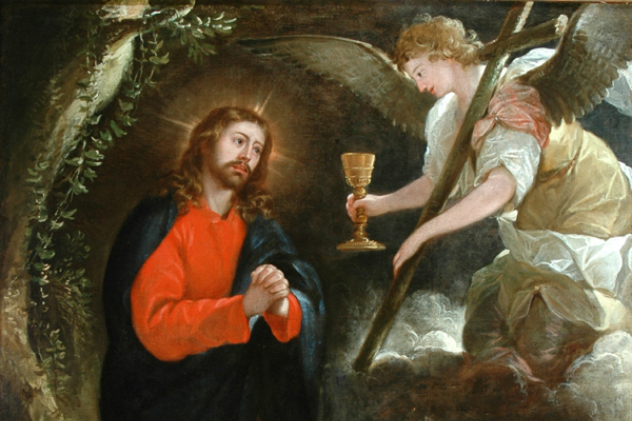
There are a couple of stories that have grown up around the Nanteos Cup, a small, wooden drinking vessel ravaged by time and part of the Welsh estate Nanteos House. To believers, the Nanteos Cup is the Holy Grail.
The first real modern record of the wooden cup is from 1870, when it was displayed at Lampeter University. By 1906, it was not only firmly associated with the Grail legends, but it was also thought to have healing powers. There were so many people who believed the cup was the Grail that a ritual was practiced around the cup to keep it safe from would-be thieves. Fear of theft notwithstanding, it’s been repeatedly filled with water and given to the ill and the elderly, resulting in a number of claims that it worked. The cup has been dated to the medieval era, but that certainly hasn’t stopped the legends.
The story says that long after the cup was carried to Britain by Joseph of Arimathea, Henry VIII was waging war on Catholicism and those who practiced it. A group of monks who had long been in possession of the cup took it to Wales and (they hoped) out of Henry’s reach. They took refuge on the grounds of Nanteos with the Powell family. One by one, the monks died and passed both their secret and the cup to the Powell family, whose members became the guardians of the cup.
In July 2014, the cup was stolen from the home of a seriously ill woman who had been loaned the cup. Regardless of what experts have said about dating the vessel, belief is still a very, very powerful thing.
2 The Lia Fail

Similar to the Stone of Destiny (and occasionally confused with it), the Lia Fail stone is the stone where the ancient kings of Ireland were crowned. It stands at the Hill of Tara, and for more than 5,000 years it’s been a central figure in feasts, the crowning of kings, and celebrations held to honor them. Standing about 1.5 meters (5 ft) tall, the stone has been moved several times. It was transferred to its current location in 1824 in commemoration of the Battle of Tara.
According to the legend, the Lia Fail stone was one of four gifts brought into the the mortal realm by the Tuatha de Danann. These children of the goddess Dana bore gifts for the mortals—gifts that became a recurrent theme throughout British folklore and mythology. In addition to the stone, they also brought a sword, a spear, and a cauldron. The gifts, in addition being tied to Christian imagery like the Holy Grail and the Spear of Destiny, have been immortalized in the tarot deck as the different suits: Lances, Cups, Swords, and Shields.
The stone was noted for its ability to recognize the one fit to rule, the true kings of Ireland. It would roar in their presence. Needless to say, it no longer roars, and some believe that it lost its otherworldly power when Christ was born.
According to another part of the story, the stone was more closely linked to kingship than it was to the otherworldly. An ancient prophecy stated that whatever land the stone was in would be subject to the rule of the Scottish or Irish people. It’s also here that the story of the stone gets a little confusing. According to some historians, this is where records show that the stone was removed from Ireland and taken to Scotland, while others maintain that it’s absolutely not true.
1 The Foundation Stone

If we’re talking about turbulent histories, we need to look to Jerusalem. Temple Mount is the intersection of three very different religions; all three hold it sacred. Among the most sacred of places is the Foundation Stone, which formed the basis for the Temple Mount, also known as the Noble Sanctuary. At a glance, the Foundation Stone is just that—a stone. It’s a slab of limestone that really doesn’t look like much, but has been a site of controversy, debate, and bloodshed for centuries.
According to Muslim tradition, the Foundation Stone is the place where Muhammad ascended. It’s also said to be the place where all fresh water in the world came from. Beneath the Foundation Stone is a well, and tradition says that it’s a bottomless pit where souls wait to be judged.
In Jewish tradition, it’s the place where all of creation began. In order for the world and everything in it to be created, there needed to be a focal point for this creation to begin—and that was the Foundation Stone. After creation, the stone continued to be of great importance to Jewish tradition. It was the site of the Ark of the Covenant and the Ten Commandments, and its presence there allowed everything in creation to be touched by the power of God. It’s also the place where Jacob slept and dreamed of a ladder that connected everything in creation, signifying all levels of spiritual attachment.
Today, the Foundation Stone is right in the middle of one of the most hotly contested areas of the world.





